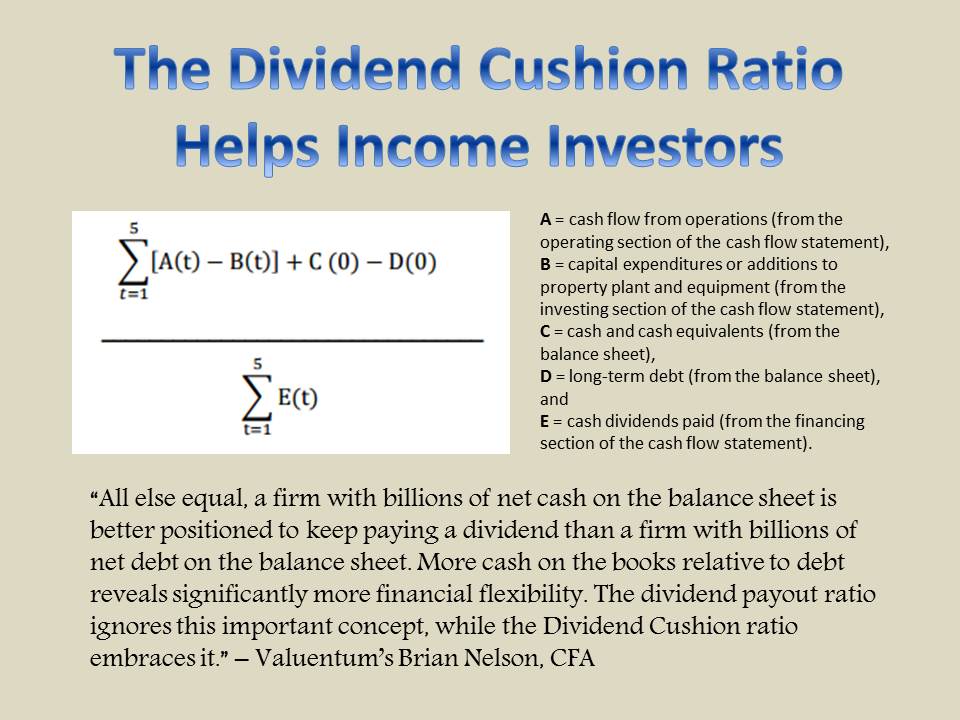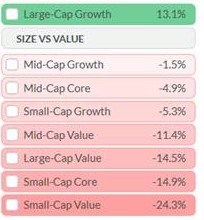Member LoginDividend CushionValue Trap |
Economic Commentary: Robots, Value Trap, and Politics on the Markets
publication date: Oct 14, 2019
|
author/source: Valuentum Analysts
Tickerized for stocks in the DIA. Valuentum sat down for the latest installment of its periodic economic commentary, and the team tackled a wide array of topics, from robots on Wall Street, to President of Investment Research Brian Nelson’s new book Value Trap, to political influence on the markets and boyond. Let’s set the stage with a prompt from a recent Bloomberg article, “The Master of Robots…Coming for Wall Street:” “The problem is, computer-powered strategies are struggling to live up to the hype, with a Eurekahedge index of AI hedge funds lagging peers in recent years. That spells opportunity for the likes of Lopez de Prado with his outfit True Positive Technologies -- a dig at the erroneous conclusions derived from data that are rampant among quants, or false positives. His diagnosis: Fund managers are routinely throwing data at a robot without forming a theory. If a backtest suggests investors should snap up stocks on a given day of every month and sell them a number of days later, only a joined-up rationale for the trade will work in live markets. In the other extreme, economist-led quants have a penchant to use machines in order to confirm pre-existing ideas, he reckons. One way to fix all this is to use the technology to develop core propositions -- the scientific way. “Without this theory-ML interplay, investors are placing their trust on either toy models or high-tech horoscopes,” Lopez de Prado wrote in a recent paper. Callum Turcan: There seems to be a growing chorus of those that think quant and AI-driven trading strategies are largely marketing schemes to boost assets under management ("AUM") masquerading as potential ways to generate alpha. Not having a theory when making trading or investing decisions means when things get tough, those traders/investors will have weak hands and no conviction in their positions. Matthew Warren: I am in complete agreement about weak hands. If and when the markets go “haywire,” and quant fund losses mount, they have a tendency to turn off the trading machine. Volumes drop and volatility only increases. Trading without a hypothesis of some kind seems moronic to me. It begs the belief that it is being done in size. Brian Nelson: Since the publishing of Value Trap, we are already starting to see many changes in the investment landscape. Berkshire’s abandoning of book value as a key metric in its latest annual report, executive teams scaling back buybacks, now some 110 distribution cuts across the MLP universe, key pipeline players putting free cash flow next to distributable cash flow in press releases, and now perhaps the biggest: one of the top quants on Wall Street emphasizing the importance of theory over data mining. While I would like to think that Value Trap’s influence is causing these positive developments, in some ways, it is just a matter of common sense, and Valuentum getting ahead of developments is just part of good research. [That said, given some of the sales trends that I’ve been witnessing with the book, it is possible that Value Trap may have had something to do with a few of these new developments.] When it comes to quant today, I think a lot of investors simply don’t believe that many are trading on spurious correlations developed through data mining, but it is more prevalent than one thinks. The explosion of the terms “evidence-based” and “empirical” during the sales process, for example, almost by definition involves some torturing of the data and likely a number of false positives with the conclusions, especially if the data analysis isn’t preceded by theory. Most of the Chicago school is empirical sans theory, for example. Professor Marcos Lopez de Prado, one of the top quants on Wall Street emphasized the importance of theory setting the parameters instead of the ‘oracle’ approach (data mining) – paper. As he said, without theory, quant and machine learning is just playing with “toy models” or reading “high tech horoscopes.” The reality is that the influence of the three-factor model as the seminal work on factor investing has spawned some 300+ factors developed in similar fashion by academia, and almost all, if not all of them, are spurious. Nobel laureate Richard Thaler, for example, wrote in Misbehaving that Fama and French have all but conceded “that they did not have any theory to explain why size and value should be risk factors.” Today, not only is the traditional quant value B/M metric failing, but recent work indicates the size effect doesn’t really exist either--and the CAPM has been dead for almost three decades now. The issue with quantitative research comes down to the preponderance of false positives, of which HmL and SmB are likely, brought about by data mining via backtests. The theories or hypothesis tend to come after the data analysis, not before, in somewhat of a Texas Sharpshooter fallacy. How is this conversation relevant to the individual investors, and why should they be paying attention? Well, for starters, it’s easy for the layman to understand that it doesn’t matter how much theory comes after showing that avocado prices are highly correlated to Bitcoin returns; they know the relationship is still spurious. It’s obvious. But it’s not as easy for the layman to understand the same thing about B/M and size, for example – two items almost completely irrelevant to the valuation equation in enterprise valuation. B/M and size are what I describe as “believable” false positives (which are more dangerous than obvious ones like the avocado/Bitcoin example), and it’s not just this factor or that factor; it is pretty much all of them that are based on realized, ambiguous data. The application of realized ambiguous data, if used as explanatory variables, likely makes the entire regression wrong, or if not, certainly less useful. Putting theory first in quant and machine learning means that it is expected, unrealized data that matters--forward-looking expectations that may or may not come to fruition. That’s what drives prices and returns. Data mining has become extremely problematic to the industry, and my belief is that its influence is not only the source of the “empirical” and “evidence-based” sales processes that are being pitched to individual investors when it comes to index investing (and the growth of factor research and investing), but also I believe that many in active management have been “wrongly” influenced by these failed quantitative processes, and it has manifested itself into severe active fund underperformance.
Image Source: Koyfin, retrieved September 26; returns over a trailing 10-year period. Certainly, we can point to a lot of reasons why 90% of active management has failed during the past 10-15 years, but quant’s influence (as revealed by its proliferation), in my view, is one of them. Large cap growth stocks have outperformed small-cap value stocks by 37 percentage points during the past decade or so (exactly the opposite of what a quant might have expected when the three-factor model was published in the early 1990s). Anyone that says quant’s influence on the industry hasn’t impacted active fund underperformance isn’t calling it straight, in my view. Callum: What I find interesting is that active managers, according to a recent JPM report “Active Management and QE-Distorted Markers”, tend to perform relatively better (versus the relevant benchmark) in down markets as compared to markets in a decade-long upward trend. As we got later into the latest business cycle, a growing number of active fund managers seem to have struggled in finding alpha, which I would argue is at least partially due to price-agnostic trading bidding up most equity values in the post-Great Financial Crisis world. It's harder to outperform when everything appears to be increasing in value, and the only right call was to be long bond-proxies (REITs, utilities) and secular growth names (large tech and payment processing companies). Switching gears a bit, here's a piece from CNBC covering the 2020 presidential race side of things and how that could, potentially, be impacting recent market movements (i.e. weakness in financials or in certain parts of the healthcare space, such as PBMs). One never wants to put too much emphasis on short-term market movements as causation and correlation are two different beasts, especially when emotionally charged political views/calculations are at play, but something to keep in mind given the dichotomy the 2020 presidential election will likely pose as it relates to the trajectory of economic policy in the US. Brian: Without a doubt, the political cycle will be a source of market volatility as we head deeper into the 2020 election cycle. Democratic candidate Bernie Sanders’ campaign may be facing heightened pressures given health concerns, and this may play into the hands of Elizabeth Warren, increasing her chances as the Democratic choice. Recent polls put her ahead of Joe Biden, and I think developments in the Sanders’ campaign may have more to do with that than anything else. There’s still a long road ahead until we get to the brunt of the election cycle, but it looks like Warren is now the frontrunner to face President Trump. Going back to the election of President Trump in 2016, the markets sold off aggressively, but then rebounded at a considerable pace. Speculating on the direction of stock prices as a result of who wins the next election may be largely a fools’ errand, as there’s a lot more at work than who is in the Oval Office. That said, I do believe this bull market will be severely challenged in the event that a Democrat takes office given some of the progressive items on the agenda. Regardless of whether it is Biden, Warren, Sanders, Trump or even Hillary Clinton that takes office next term, however, this bull market is long in the tooth, and considerable risks are mounting. Callum: In particular, I think the healthcare (XLV, IBB) sector could be in for a lot more pain (at least in terms of technical performance heading into election season, if it hasn't started already) as we enter 2020 given the paradigm-shifting risks a Warren or Sanders presidency would pose to the space (as it relates to price setting across the entire drug making, hospital, doctor, and insurance industries, on top of the ability to negotiate prices with the government or the lack thereof, length of exclusivity for drugs, regulatory burdens, tax rates at-large, etc.). Matthew: Unless the Democrats are able to capture the Senate in addition to the Presidency, I think some of the bolder plans won’t make it past the talking stage. That said, there seems to be a groundswell amongst the populace to increase access and lower the costs of healthcare. For example, there could certainly be bipartisan action against drug company pricing power. In other news, Moody’s came out with a report saying that the “next recession may lower 10-year Treasury yield to range of 0.5% to 1%.” If they are right about where rates are going in the next recession, and I have no reason to argue with the hypotheses, then there will be that much more money moving into bond proxies such as high yielding “safe” dividend paying stocks (SDY). Callum: On your point regarding bipartisanship and potential changes to the structure of the US healthcare space Matt, assuming a Warren White House, Democratic House of Representatives, and a Republican Senate, I do think there's at least a chance that some legislation could get pasted regarding controlling drug prices (or at least attempting to via government regulatory schemes). Pharmaceuticals and pharmaceutical benefit managers ("PBMs") would likely get hurt should this particular scenario arise, but only to a modest degree relative to what would likely occur should a complete takeover by the US Democratic party materialize. It's a tall order in the US Senate. Regarding the Moody's piece, it mentions the chances of either a 25 basis point or 50 basis point cut at the upcoming FOMC meeting (October 29-30), with market participants clearly seeing the chance of a 25 basis point cut as extremely likely (far less so for a 50 basis point cut). After the decent jobs report for September 2019 (136,000 jobs added, 2.9% year-over-year average hourly earnings growth, reduction in U-6 unemployment rate from 7.2% to 6.9% on a sequential basis, reduction in U-3 unemployment rate from 3.7% to 3.5% on a sequential basis), a 50 basis point cut seems off the table in my view while a 25 basis point cut is still very much on the table. That's due in part to the slowdown in US services activity that was reported recently (ISM Non-Manufacturing Index for the US dropped from 56.4 in August 2019 to 52.6 in September 2019, which was down sharply from 60.8 in September 2018), with services representing the key economic growth driver for the US so far this year. Additionally, US job growth in 2019 has slowed down substantially from 2018 levels (by ~25-30% according to the Wall Street Journal). In my view, the Fed will likely want to push through additional incremental insurance rate cuts (meaning increments of 25 basis points) to offset exogenous headwinds and maintain market stability (made easier by pushing through smaller rate cuts in a consistent manner instead of deeper rate cuts at an inconsistent rate). With respect to the lower bound yield for ten-year US Treasuries that Moody's forecasted and highlighted, there are a lot of moving parts here. How the US-China (FXI, MCHI, KWEB) trade war, Korea-Japan (EWJ) trade war, Russia-West (RSX) tensions, Brexit, upcoming European elections in Germany (EWG) and France (EWQ), the 2020 US election, and much more plays out will have a tremendous impact of the trajectory of global economic growth over the coming decade(s), which in turn will have a powerful impact on the trajectory of US economic growth during this period. While a slowdown and potentially a recession seems to be coming up for the US, how quickly we bounce back will be dependent on a lot of factors one can't predict with absolute certainty. Join the conversation. Leave your thoughts below! |




1 Comments Posted Leave a comment